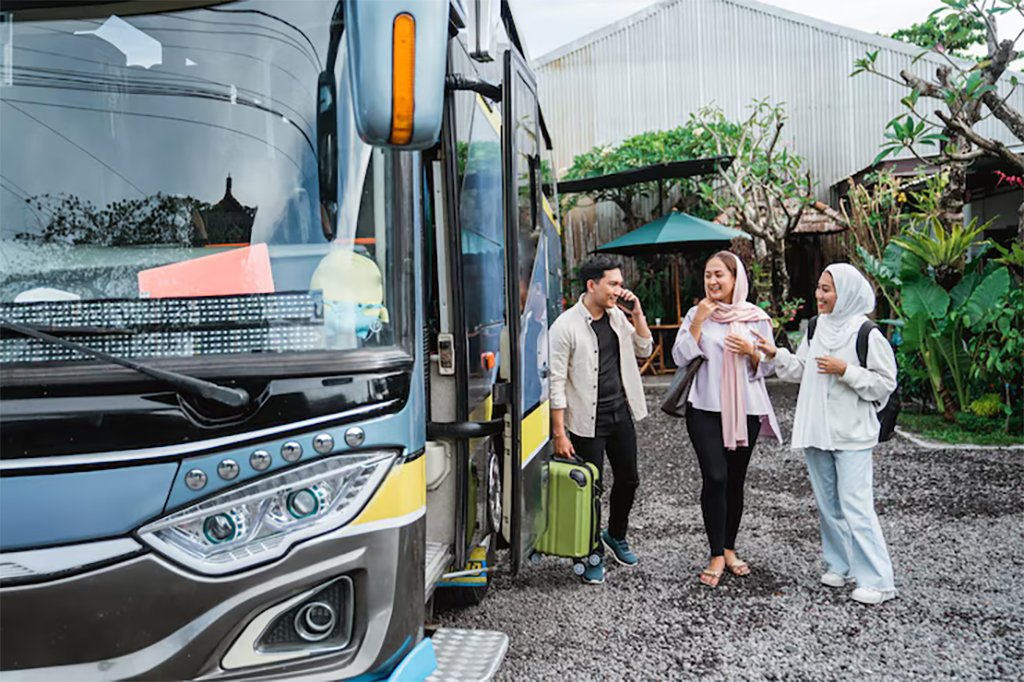Bali offers a rich tapestry of experiences—from its lush rice terraces and serene beaches to its vibrant markets and spiritual temples. To truly immerse yourself in the Balinese way of life, understanding how to navigate the island like a local is essential. This guide delves into eight authentic transportation methods that locals use daily, providing you with the knowledge to explore Bali efficiently and authentically.
1. Scooter Rentals: The Island’s Lifeline
Scooters are the heartbeat of Bali’s transportation system. For many locals and savvy travelers, renting a scooter is the most convenient and cost-effective way to traverse the island. Daily rental rates typically range from IDR 80,000 to 150,000 (approximately $5 to $8 USD). This flexibility allows you to explore hidden gems, navigate narrow alleyways, and avoid the island’s often congested traffic.
Tips for Renting a Scooter:
- International Driver’s License: Ensure you possess an international driving permit, as it’s required by law.
- Helmet Usage: Always wear a helmet; it’s not just a safety measure but also a legal requirement.
- Insurance: Opt for insurance coverage to safeguard against potential accidents or theft.
- Vehicle Inspection: Before renting, inspect the scooter for any existing damage and take photos to avoid disputes later.
- Fuel: While gas stations are prevalent, small roadside stalls also sell petrol in bottles, often at a slightly higher price.
Remember, while scooters offer unparalleled freedom, they also come with risks. Bali’s traffic can be chaotic, and road conditions vary. Only rent a scooter if you’re confident in your riding abilities.
2. Ride-Hailing Apps: Grab and Gojek
In recent years, ride-hailing apps have revolutionized transportation in Bali. Services like Grab and Gojek are widely used by locals for short trips, deliveries, and even food orders.
Advantages:
- Convenience: Book rides directly from your smartphone.
- Affordability: Generally cheaper than traditional taxis.
- Variety: Choose between motorbikes for solo trips or cars for group journeys.
- Multifunctional: Both apps offer additional services like food delivery and courier services.
Considerations:
- Area Restrictions: In certain areas like Ubud and Canggu, ride-hailing services may be restricted due to local regulations.
- Surge Pricing: During peak hours or adverse weather conditions, prices may increase.
3. Blue Bird Taxis: Trustworthy and Transparent
Blue Bird Group is Bali’s most reputable taxi service. Recognizable by their light blue vehicles and the iconic bird logo, Blue Bird taxis operate on a metered fare system, ensuring transparency and fairness.
Tips for Using Taxis:
- Meter Usage: Always ensure the driver uses the meter. If they claim it’s broken, consider finding another taxi.
- Booking: While you can hail a taxi on the street, using the Blue Bird app or calling their hotline can be more reliable.
- Awareness: Be cautious of unofficial taxis that mimic Blue Bird’s appearance; always verify the logo and signage.
4. Private Drivers: Customized Exploration
Hiring a private driver is a popular choice for tourists seeking personalized itineraries. For approximately IDR 600,000 (~$40 USD) per day, you can have a local driver guide you to various attractions, offering insights and flexibility.
Benefits:
- Local Knowledge: Gain insights into Bali’s culture, history, and hidden spots.
- Comfort: Relax in air-conditioned vehicles without the stress of navigating.
- Flexibility: Customize your itinerary to suit your interests.
Booking Tips:
- Hotel Assistance: Many accommodations can arrange a driver for you.
- Online Platforms: Websites like Bali Driver Guide offer a list of reputable drivers.
5. Public Buses: Trans Sarbagita
For budget-conscious travelers, the Trans Sarbagita bus system offers an affordable way to travel between major towns in Bali. The network connects areas like Denpasar, Nusa Dua, and Ubud, operating from early morning until late evening.
Pros:
- Cost-Effective: Fares are minimal, making it accessible for all.
- Cultural Experience: Interact with locals and experience daily life.
Cons:
- Limited Coverage: Doesn’t reach all tourist destinations.
- Comfort: Buses can be crowded, especially during peak hours.
6. Cycling: Eco-Friendly Exploration
Cycling is an excellent way to explore Bali’s scenic landscapes, especially in areas like Ubud and Sanur. Many accommodations and local shops offer bicycle rentals at affordable rates.
Benefits:
- Environmentally Friendly: Reduces carbon footprint.
- Health Benefits: Provides light exercise while exploring.
- Authentic Experience: Navigate through narrow alleys and local neighborhoods.
Considerations:
- Traffic: Be cautious of busy roads and always wear a helmet.
- Night Riding: If cycling after dark, ensure your bike is equipped with lights.
7. Walking: Immersive Discovery
Sometimes, the best way to experience Bali is on foot. Walking allows you to discover hidden temples, local markets, and quaint cafes that might be missed when traveling by vehicle.
Tips:
- Footwear: Wear comfortable shoes suitable for various terrains.
- Hydration: Carry water, especially when exploring during the day.
- Sun Protection: Use sunscreen and wear a hat to protect against the tropical sun.
8. Cidomo: Traditional Horse-Drawn Carriages
In some areas, particularly in Lombok, you’ll encounter the Cidomo—small horse-drawn carriages. While not common in Bali, they offer a nostalgic glimpse into traditional transportation methods.
Characteristics:
- Design: Brightly colored with decorative tassels and bells.
- Capacity: Typically seats up to four passengers.
- Usage: Mainly used for short distances within villages.
Conclusion
Navigating Bali like a local involves more than just choosing a mode of transport; it’s about embracing the island’s culture, rhythms, and lifestyle. Whether you’re zipping through traffic on a scooter, engaging in a conversation with a driver, or leisurely cycling through rice fields, each journey offers a unique perspective of Bali. By understanding and utilizing these local transportation methods, you not only enhance your travel experience but also gain a deeper connection to the island’s essence.
Tags:









